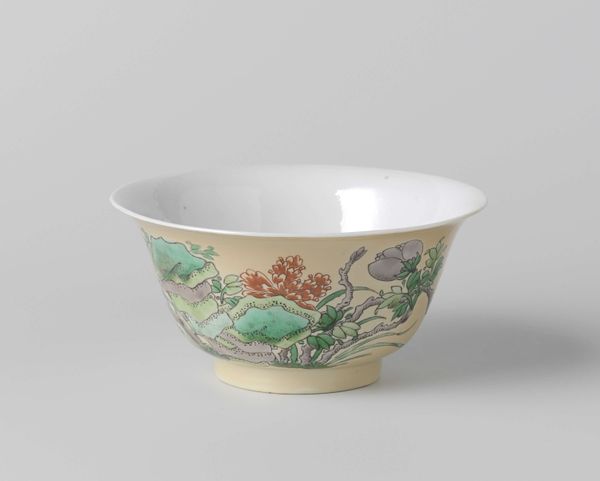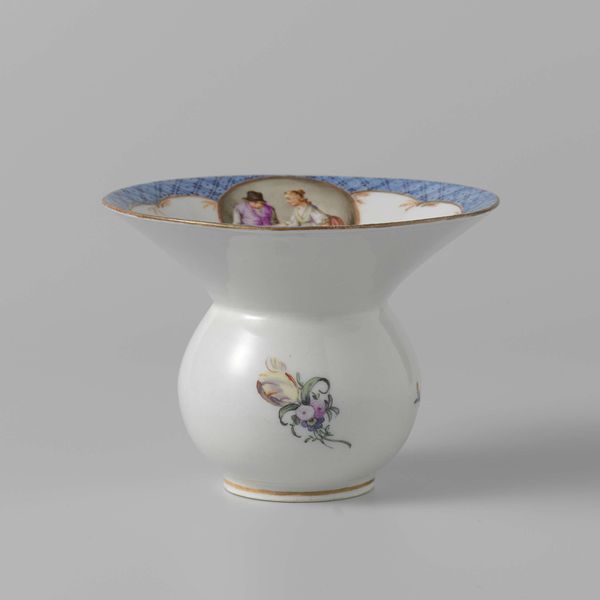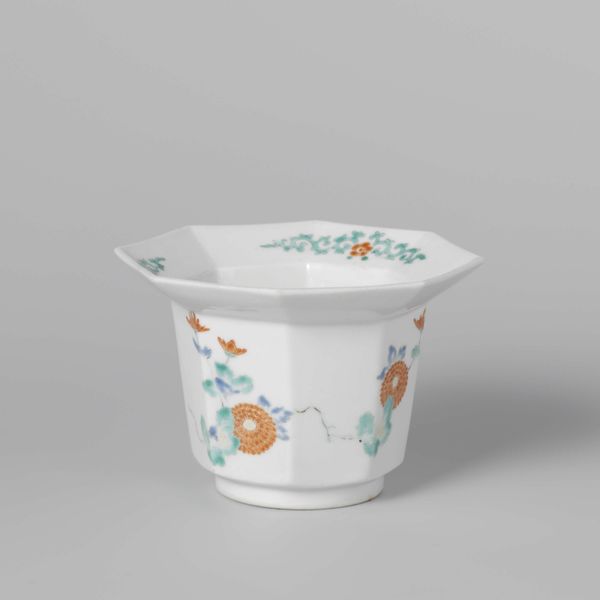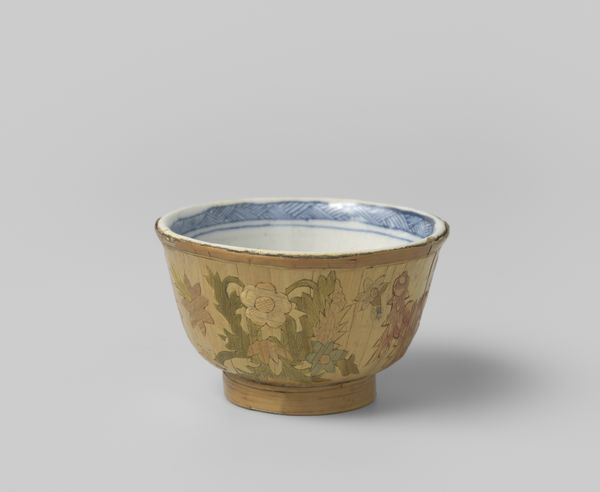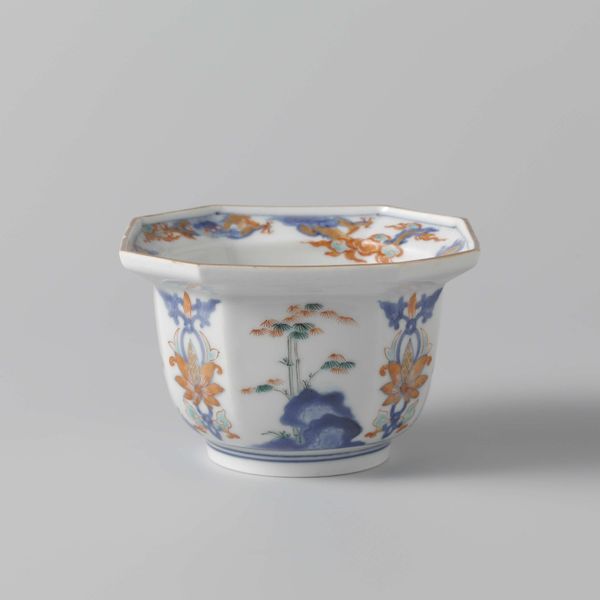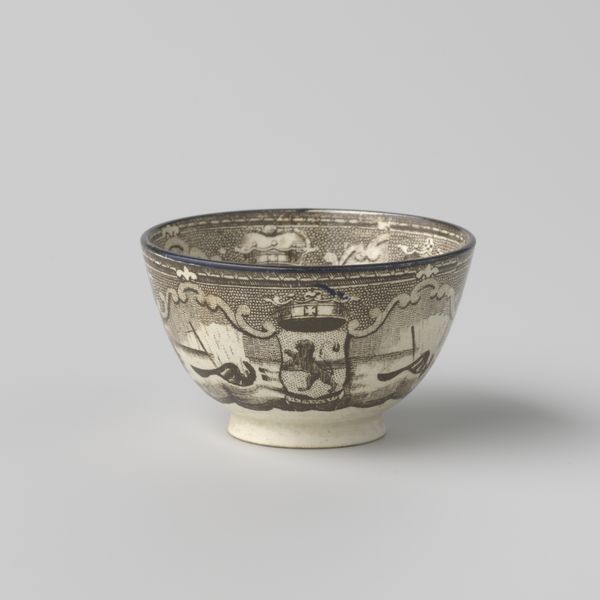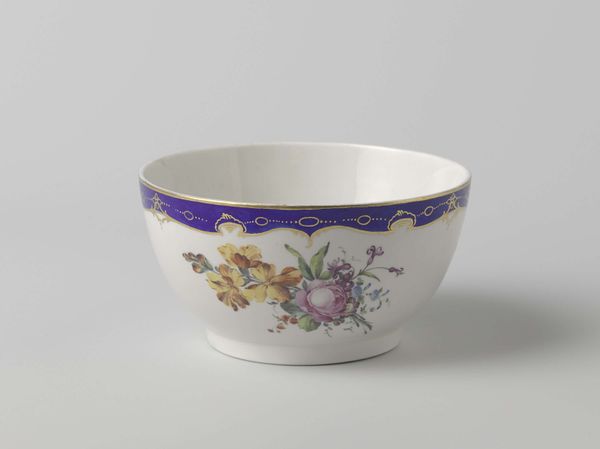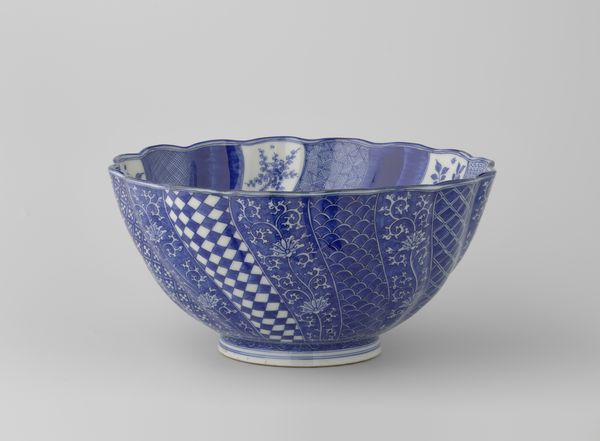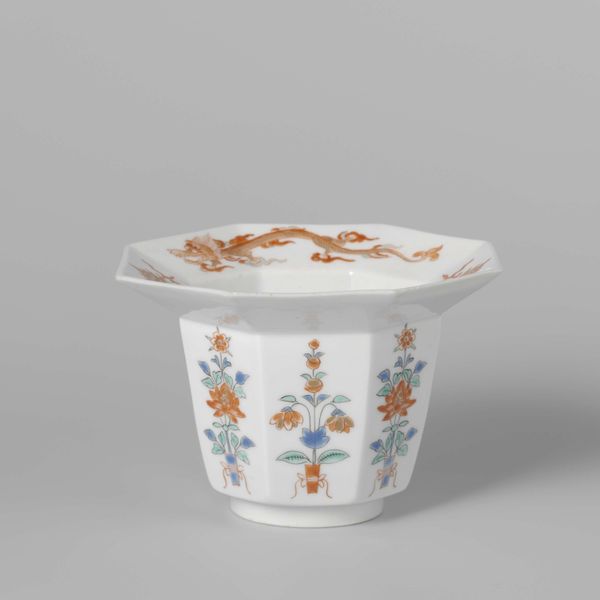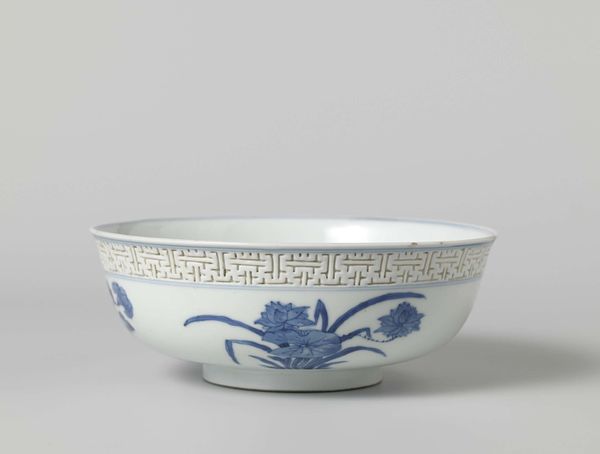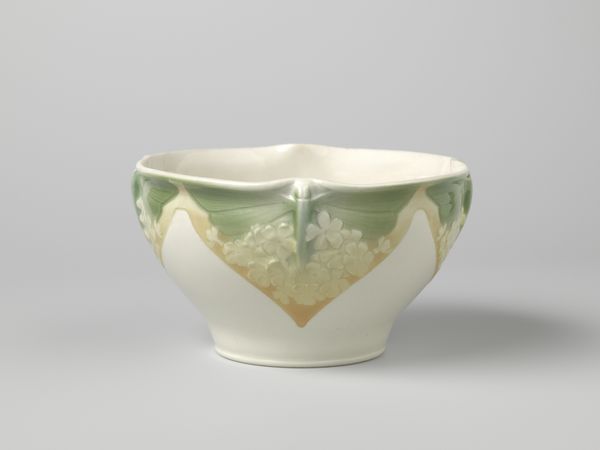
Dimensions: height 9.2 cm, width 18.3 cm
Copyright: Rijks Museum: Open Domain
Curator: Ah, what a striking piece! The boldness of the lines is really captivating. Editor: It's got a slightly melancholic feel to it, I think, though those muted watercolor hues lend a dreamlike quality, don’t you agree? A little faded beauty. Curator: Indeed! This is a "Spoelkom," or washbowl, created by Theo Colenbrander between 1920 and 1922. It’s ceramic, and it’s painted on one side with watercolors. Editor: A washbowl, you say? The name gives it away a bit, doesn't it! The Art Nouveau elements in those swirling motifs...reminds me a little of Aubrey Beardsley, that touch of whimsy with something a bit darker. Do the stylized plants reference anything in particular? Curator: Good eye! While the overall aesthetic definitely evokes the Art Nouveau spirit, it is somewhat unique within that realm, and though these stylized, flowing vegetal forms have clear roots in natural forms, it's difficult to say there’s a direct reference to anything specific, beyond an intention to capture a sense of organic vitality. Colenbrander was always experimenting, moving fluidly across decorative styles and periods. The watercolor technique gives this functional item a particularly light, almost ephemeral quality, setting it apart from typical heavier ceramics of the period. Editor: Exactly! It almost feels a little unfinished, but deliberately so. It’s that translucent effect of the watercolors. But beyond the technical stuff, is there any sense in which its aesthetic qualities represent an attempt to capture the mood of the time, the 20s in Europe? Curator: The period between the wars saw a renewed interest in the decorative arts, which certainly inspired a wider appreciation for objects like these. As people embraced the functional in their everyday lives, decorative artworks—such as this washbowl—hinted toward a kind of elegant optimism that things, somehow, would all be all right, even during difficult times. But its overall spirit and construction are decidedly avant-garde—both accessible, intimate, and slightly esoteric, all at once. Editor: Accessible esotericism. I like that, yes. It really is such an enchanting piece of history... and now, as we move onward, our own time becomes history as well. Curator: Well put. Art like this connects us—through form, pattern, function, and the history of its interpretation—to shared human experiences. Let's see what other threads we can find in the next work!
Comments
No comments
Be the first to comment and join the conversation on the ultimate creative platform.
